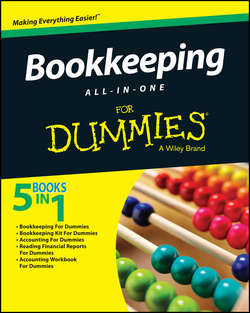Читать книгу Bookkeeping All-In-One For Dummies - Dummies Consumer - Страница 25
На сайте Литреса книга снята с продажи.
Book I
Keeping the Books
Chapter 3
The General Ledger
Adjusting for Ledger Errors
ОглавлениеYour entries in the General Ledger aren’t cast in stone. If necessary, you can always change or correct an entry with what’s called an adjusting entry. Four of the most common reasons for General Ledger adjustments are
✔ Depreciation: A business shows the aging of its assets through depreciation. Each year, a portion of the original cost of an asset is written off as an expense, and that change is noted as an adjusting entry. Determining how much should be written off is a complicated process that Book IV Chapter 1 explains in greater detail.
✔ Prepaid expenses: Expenses that are paid up front, such as a year’s worth of insurance, are allocated by the month using an adjusting entry. This type of adjusting entry is usually done as part of the closing process at the end of an accounting period. Book IV Chapter 6 shows you how to develop entries related to prepaid expenses.
✔ Adding an account: Accounts can be added by way of adjusting entries at any time during the year. If the new account is being created to track transactions separately that once appeared in another account, you must move all transactions already in the books to the new account. You do this transfer with an adjusting entry to reflect the change.
✔ Deleting an account: Accounts should only be deleted at the end of an accounting period. The next section shows you the type of entries you need to make in the General Ledger.
Book IV Chapter 6 talks more about adjusting entries and how you can use them.
